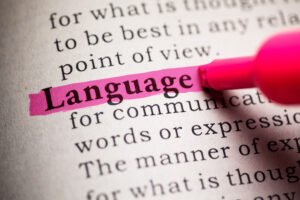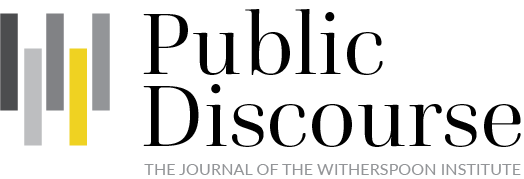The question of “culture” is on many people’s minds today. Many argue that “politics is downstream from culture,” or they lament the so-called “culture wars.” Some aim to change culture through politics, but others emphasize that culture transcends the political and consists more in religion and morals.
In Christopher Dawson: A Cultural Mind in the Age of the Great War, Joseph Stuart makes his foray into this discussion—or rather he reintroduces into it ideas of the twentieth-century historian and sociologist Christopher Dawson. Stuart’s book is a work of serious scholarship, made for scholars; but its clear, engaging presentation also makes it eminently useful for anyone trying to understand how to improve culture today.
Culture: A Definition
Culture “is a frustratingly vague concept,” Stuart points out. “Few people, even social scientists, agree on its meaning.” Dawson defined it simply as “the common way of life of a people, including their vision of reality.” He analyzed it into four components.
The first three, which others had identified before, correspond to man’s material life: his natural environment, that is, the place (P) where he lives; his economic life or work (W); and the social structures by which members of his people or “folk” (F) relate to each other: Stuart summarizes the three together as FWP. The environment provides the possibilities for man’s work, which then, Stuart says, “shape[s] the natural environment into a mode of life.” (England’s fertile lands, for instance, protected by the sea from invasion, helped make the country bucolic and peaceful.) Work in turn shapes the folkways of a people (as farming and animal husbandry shaped pre-industrial England). In one scholar’s words, the “religious, moral, and ethical ideals which become part of the soul of a nation and make it what it is” are intimately linked to this cultural matrix. The most enduring cultures, such as China and India, best integrate all three components; cultures that neglect any of them put themselves in grave danger, as Dawson worried modern, highly urbanized Westerners did by losing touch with the natural environment.
Start your day with Public Discourse
Sign up and get our daily essays sent straight to your inbox.This method’s focus on empirical facts keeps social science true to itself; without it, sociologists and historians easily devolve into poor philosophers, such as the positivist Auguste Comte or antimodern historians like Hilaire Belloc. Belloc and other medievalists, Stuart says, had “a nostalgia for an integrated medieval social order” that was “idealized and ahistorical.” Dawson sympathized with many of their criticisms of modernity; indeed, he counted many of them as friends. But he also thought, in Stuart’s words, that it was not “easy or always helpful to judge the present in terms of the past.” Real historians—those who immerse themselves in historical data—see how incomparable different historical moments are, despite their similarities.
As sound as the FWP formula is, Dawson saw that it was susceptible to environmental determinism—the view that man’s material life causes all his behavior. This was why he more clearly distinguished “the spiritual and intellectual side of human nature”—or “ideas” (I)—as a fourth element of culture, intertwined with the other elements but above them. Man’s intellectual life was, Dawson said, “consubstantial with [culture’s] material substratum [FWP], in the same way that the mind of the individual is consubstantial with his body.” It is the “formative principle of culture” as the soul is of the body; it “emancipates man from the purely biological laws which govern the development of animal species.” “Spiritual and intellectual realities [need] to be interpreted from within the social environment,” Stuart explains, but they cannot be reduced to it; they have to be considered “also and primarily from their own viewpoint through their own disciplines of theology and philosophy.” Scholars who ignored this vital fact of human life would gravely undermine their scholarship.
Paramount in man’s intellectual life is religion, his relation to the transcendent; even unbelievers like William James and Émile Durkheim have acknowledged its unique role in culture (although, unlike Dawson, they reduced religion to a psychological phenomenon or “social consciousness”). Dawson agreed with Lord Acton (whose approach Dawson otherwise rejected for impossibly aspiring to “value-neutrality”) that religion was “the master key” of history. But Dawson “did not reduce culture to cult,” as Belloc did (who said “The Faith is Europe and Europe is the Faith”). Dawson agreed that one could not understand the remarkable spiritual and material progress of the West apart from its Christian roots, but explaining Christianity’s influence required more than “ecclesiastical history.” One had to consider not only “the process of revelation and the action of divine grace,” but also “the process of culture formation and change, which is the subject of anthropology, history, and allied disciplines.”
A striking confirmation of Dawson’s theory of culture came with the world wars and the rise of totalitarianism—what Dawson also called “political religion.” Political religions, he argued, followed from the separation of the “inner world of the moral consciousness from the outer world of economics and politics.” The West’s authentic religious foundations, in Christianity, eroded throughout the nineteenth century under pressure from the individualist and materialist philosophies of the Enlightenment, and from disruptions to traditional folkways (facilitated by economic changes) to which European Christianity had been adapted. The weakening of faith created what Dawson called a “spiritual vacuum,” which politics filled when culture reached a crisis.
That crisis was World War I, which Stuart prefers to call the Great War because of its epochal significance. The conflict’s massive scale required governments to mobilize and unify their populations in unprecedented ways, through conscriptions, rationing, propaganda, and the like. This experience of “total war” filled Europeans with a sense of purpose they had forgotten since Christianity’s waning. Even in less secularized America, “farm boys and small-town nurses, far from the scene of action, became emotionally and spiritually embroiled in the conflict.” But after the war was over, spiritual restlessness and despair resurfaced. Benito Mussolini and Adolf Hitler responded by trying to reorganize society permanently along the lines of total war (hence the term “totalitarianism” for their project). That meant elevating one of the material cultural elements (FWP) to religion’s former place: Nazism valorized German folkways (F) and fascism valorized the Italian nation-state (P); Marxism idolized work (W). In America politics was not totalized to the same degree, but the moral language of wartime propaganda was borrowed to promote progressive political reforms.
Reintegrating Religion into Public Discourse—Without Religious Integralism
What relevance, then, do Dawson’s theories have for cultural questions of our times?
For one, by identifying culture as the proper substance of human civilization, and demonstrating that every culture consists in a place, an economy, a people, and their spiritual life, Dawson shows how to reintegrate religion into mainstream scholarship and public life. Talking about religion in academia or public affairs is neither irrelevant nor a dangerous prelude to theocracy: it is to take into account a constant, crucial fact of human existence. Scholars of human culture—historians, sociologists, anthropologists, et al.—must strive to examine the whole breadth of human experience, acquiring what Stuart calls a “cultural mind.” They must “see things whole” in man’s life, relating all parts correctly to one another and leaving nothing out, especially nothing as universal and foundational as man’s quest for the divine. Stuart notes happily that, as time goes on, mainstream scholars (David Hackett Fischer and Peter Brown come to mind) have been embracing such a method.
On the other hand, if secularists would be wrong to ignore religion, religious believers should beware not to fall into forms of hyperidealism. These would include, among other things, what Stuart calls kinds of “Christian ‘political religion,’” such as theocracies and integralist states (which historically exhibit high levels of corruption and other social ills). Much of American Catholicism by the mid-twentieth century exhibited a similar “excessive intellectualism.” While living in America in the 1950s, Dawson voiced concern over the “highly abstract” way in which many Catholic colleges taught Catholicism, as though, in Germain Grisez’s words, it were a set of “theses to be memorized” rather than a living faith. The more natural place to start understanding Christianity, Dawson said, was the Bible and the liturgy, where religion “touches the individual psyche” through direct experience. Students also had to be taught the intellectual content of the faith, but viewed within its development in history, as John Henry Newman counseled. Viewing Christianity in this way, with a cultural mind, allowed one to see the continuity of its teachings over time, in spite of superficial changes. This sociological approach also helped students’ faith remain strong in the modern world, since, as Dawson pointed out, “the main assault on Christianity [in recent centuries] has based itself on sociological theories (Rousseau, Comte, Marx and others).”
Talking about religion in academia or public affairs is neither irrelevant nor a dangerous prelude to theocracy: it is to take into account a constant, crucial fact of human existence.
A lack of such cultural depth, Stuart suggests, might partly explain why many people who were confident Catholics before the Second Vatican Council later left the Church. They had clung to the exterior forms of faith without penetrating their inner substance; and when those forms changed, they concluded that many other truths that had seemed essential (and still were in fact) were negotiable. They then embraced the secularism that was spreading in America.
One could identify similar phenomena in wider American culture at the time. For instance, whereas Americans’ commitment to their timeless founding principles flourished up to and immediately after World War II, from the 1960s until today, many Americans have displayed an attitude of deep suspicion, sometimes rebellion, toward fundamental aspects of the American order. People like critical race theorists might condemn America for its historical ties to racism, slavery, or perceived failures of government leaders (as during the Vietnam War). Some conservatives have become “postliberal” critics of the American founding, as folk culture has crumbled under moral license. Both groups may lack the cultural mind to distinguish America’s sound principles from Americans’ failures to live by them.
Teaching the “Culture-Process”
Dawson believed that solving such cultural crises required better education: the only way to avoid the extremes of materialism on one hand, and of hyperspiritualism on the other, is to teach people—especially at the college and graduate level—the full complexity of human culture. Dawson did not think such knowledge alone would heal society; he believed social life began with the free initiative of the person. As Stuart puts it, “scholarship alone rarely changes culture. People with creative ability must instigate a broad movement for cultural change to take hold.” As Dawson himself said, “A culture . . . is essentially a network of relations.” Education’s role in cultural renewal, in his view, is to show people “how spiritual forces are transmitted and how they change culture, often in unexpected ways”—it teaches the “culture-process. If you can make students see the process, they will apply it themselves in the course of their study.” But if you only give them the great ideas of the past, “they won’t look beyond.”
Dawson was convinced that Catholicism was central to Western culture; perhaps this explains why mainstream scholars at non-Catholic schools have overlooked him, treating him as a peculiarly “Catholic” thinker. But Stuart’s book shows that Dawson’s cultural theory deserves the close attention of all scholars, Catholic or not. Educators at non-sectarian schools can also use his approach to inoculate their students’ minds against the political religions of today, whether they be of race, sex, or nation. Nevertheless, if Dawson is correct, any serious investigation of our contemporary Western culture will have to examine the West’s Christian roots.
Anyone who wants to revive Western academic life and society in our day ought to read this book, whether or not he shares Dawson’s religious beliefs or his particular analysis of modern times. Christopher Dawson: A Cultural Mind will give scholars ideas for how to enrich their research by relating it to other disciplines and asking new questions. The book’s ample footnotes will show where to find more ideas in Dawson’s rich but diffuse writings. Educators at the undergraduate and graduate level will get ideas for improving their curricula and better forming their students’ thinking.
Today we urgently need guidance from a cultural mind as penetrating and balanced as Christopher Dawson’s, and Joseph Stuart has made it easier than ever to find it.
Image by Nice and licensed via Adobe Stock.













